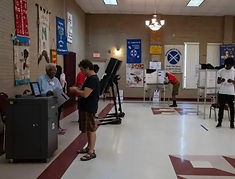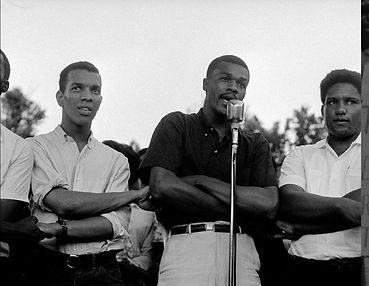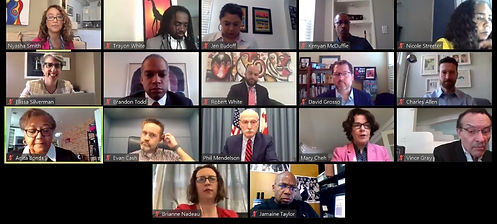D.C's Voter Turnout
Voter turnout has been decreasing in Southeast D.C for the past three decades. In 2018 Southeast recorded a historical plunge in turnout for the primary election, with less than half of the already low number turning out. It's important that you understand D.C's layout and how it feeds into the injustices witness towards people of color. The District is split up into 8 wards. They are named numerically and create a sort of diamond shape. The first 3 wards are primarily white, the three after that are diverse, and the last 2 are primarily black. Ward 7 and 8 get the brunt of the injustices that happen in D.C. They are the most policed, have the least equal education opportunities, and are plagued with gun violence. D.C is portrayed on the news as a beautiful city where change is made every day but, Washingtonians have been struggling for a while now to find the same opportunities that gentrifiers move here for. Community leaders and elected officials say the decline is a result of the extent of alienation among those affected but the increasing gentrification. “There is a sense of hopelessness in the political process,” said Stuart Anderson, a political operative who managed the successful 2016 campaign of D.C. Council member Trayon White Sr. (D-Ward 8).
Located in the predominantly white ward 3, there is the biggest high school in D.C, Woodrow Wilson Senior High School. There are 29 Advanced Placement courses offered at Wilson while there are only 3 offered at Anacostia high school which is in ward 8. It seems like the education systems sets up young students to fail at the collegiate level because of a lack of equal education. This lack of education in courses includes to lack of civic education. Children that aren't thought the importance of voting grow up to be adults without an understanding of the importance of voting.
The worry is that as voices of Southeast Washington residents grow more faint in debates about local government, politicians could feel less urgency in tackling crime, joblessness, gentrification, poor health care options and other issues that weigh more heavily on those who live east of the river. In 1994, the last year Marion Barry was on the ballot for mayor, Ward 8 turnout in the primary election was 45 percent. Barry was best known and beloved for implementing the summer youth employment program also known as SYEP in the late 1960s. Since his time as mayor, Black residents of D.C (specifically in wards 7 and 8) have alienating themselves from the voting process.
Since 2017 there has been an increase in gun violence which is thought to be caused by gang violence. There were 38 murders in Ward 8 in 2018, a 65 percent increase over the same period in 2017. Unemployment in December was 12.8 percent, compared with 5.4 percent citywide. Half of Ward 8 children lived in poverty in 2016, compared with less than 3 percent of children across the city in Ward 3, according to figures compiled by the Annie E. Casey Foundation. The lack of employment leads to an increase in violence because people have nothing to do and since they're hungry they start robbing people for money to get food. There is no excuse for violence but there is a clear cause and effect relationship.
The eastward march of gentrification through a city that has always struggled with combustible division of race and class, the social problems that linger in Southeast have led to widespread cynicism, particularly among the youth, said Linda Softli of the D.C. chapter of the League of Women Voters. “Most of them say, ‘Vote for what? It’s not going to do us any good. Nobody cares about us.’ ” said Softli. This belief hasn't come about overnight, it's the result of systematic oppression by the elected officials that live in the city's capital. The irony of people struggling so gravely a few miles from Capitol Hill and D.C council where they pass important legislation everyday isn't even funny. How can the American people trust politicians with foreign policy when they can't even trust them to fix the issues occurring right in their own back yards?



A map of the different wards in the District of Columbia.
A mural of high school that were victims of gun violence in D.C. I knew 2 of them and 2 others that are not pictured but passed away in 2020.
Ward 7 voters casting their ballots at St. Timothy’s Episcopal Church on June 19, 2018.

Marion Barry pictured (in the middle) apart of the Southern Civil Right Movement in 1963.

D.C council members as of 2020 discussing follow up COVID 19 relief legislation.

A picture of Southeast Washington D.C looking towards the Capitol in 1939.
Citations: